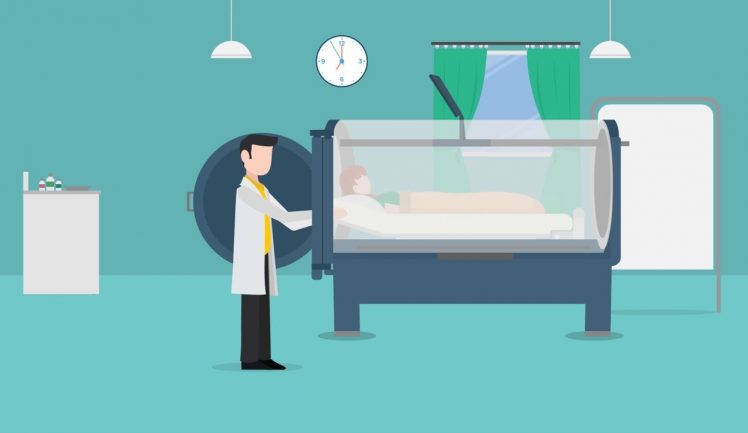I receive a lot of requests both from patients and from my peers to offer hyperbaric oxygen treatment (HBOT). I will just summarize the definition of HBOT, indications, and potential risks of HBOT.
HBOT involves breathing pure oxygen in a pressurized environment. It was initially used to treat decompression sickness but the list is growing. The definition stated by the USMS is as follows: “Hyperbaric oxygen therapy is the treatment of a disease or medical condition by the inhalation of near-100% (at least 95%) medical grade oxygen* at pressures greater than 1 atmosphere absolute (ATA) (101.3 kilopascals (kPa)) in a pressure vessel constructed for that purpose. However, in certain instances at chamber treatment pressures above 3.0 ATA, oxygen levels are reduced below 100% to achieve a partial pressure of oxygen of at least 1.2 ATA and lower than 3.0 ATA, to avoid oxygen toxicity. ”
“Scientifically supported hyperbaric treatments are usually delivered at pressures between 1.9 to 3.0 ATA.” So basically in a hyperbaric oxygen therapy chamber, the air pressure is increased two to three times higher than normal air pressure.
The following are the only indications for HBOT recommended by the UHMS:
1. Air or Gas Embolism
2. Arterial Insufficiencies
A. Central Retinal Artery Occlusion
B. Hyperbaric Oxygen Therapy for Selected Problem Wounds
3. Carbon Monoxide Poisoning
4. Clostridial Myonecrosis (Gas Gangrene)
5. Compromised Grafts and Flaps
6. Acute Traumatic Ischemias
7. Decompression Sickness
8. Delayed Radiation Injuries (Soft Tissue and Bony Necrosis)
9. Sudden Sensorineural Hearing Loss
10. Intracranial Abscess
11. Necrotizing Soft Tissue Infections
12. Refractory Osteomyelitis
13. Severe Anemia
14. Adjunctive Hyperbaric Oxygen Therapy in the Treatment of Thermal Burns
Any other medical conditions may benefit but may be on trials; some others are inconclusive or not at all.
My main concern when writing this post is that after working for 12 years in an hospital based hyperbaric medicine department I can conclude that HBOT is not a treatment for anyone. A hyperbaric chamber is a medical device and oxygen per se is a medication which is prescribed at a specific given dose (e.g. 100% oxygen at 2.4 ATA for 30 minutes with 2 periods or air breaks of 10 minutes). All patients are carefully evaluated before they can be considered for HBOT. And why is this? The hyperbaric environment along with 100% oxygen will cause important physiologic changes.
So, which are the risks?
Potential risks include:
– Middle ear injuries, including leaking fluid and eardrum rupture, due to changes in air pressure
– Temporary nearsightedness (myopia) caused by temporary eye lens changes
– Lung collapse caused by air pressure changes (barotrauma)
– Seizures as a result of too much oxygen (oxygen toxicity) in your central nervous system
– Lowered blood sugar in people who have diabetes treated with insulin
– In certain circumstances, fire — due to the oxygen-rich environment of the treatment chamber
– Death
Just keep in mind that although HBOT has great benefits it can also cause harm and is not an option for everyone.
Sources:
1. https://www.uhms.org/resources/hbo-indications.html
2. https://www.mayoclinic.org/tests-procedures/hyperbaric-oxygen-therapy/about/pac-20394380

